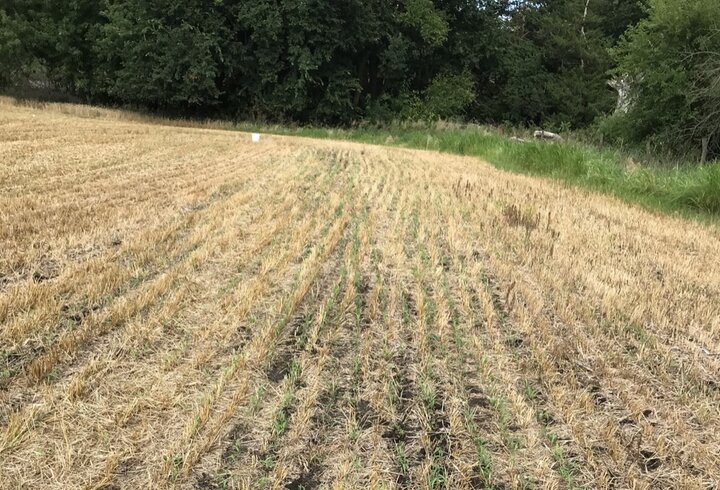John Thomas
Extension Educator Northern Panhandle
Crops in our area are growing rapidly in the hot weather. As of this week the winter wheat crop is 50-60% harvested with average or slightly above average yields (40-50 bu/ac dryland). With the dryer hotter weather proteins have been up from the last couple of years but still lacking in a number of situations because growers did not fertilize sufficiently. Wheat stem sawfly has had moderate infestations in the northern Panhandle with heavier infestations and lodging in the southern Panhandle.
The second cutting of alfalfa is mostly done with Alfalfa Weevil damaging the regrowth after first cutting in some areas.
We have been generally hot and dry with some localized thunderstorms and hail causing damage in some areas. Dry beans need to be monitored for disease and potentially sprayed if bacterial or fungal disease develop after hail. Our pasture areas are in need of rain. Corn is mostly tasseled now and beans and beets have been closing the rows in many fields.
Sugar beets are growing well with estimations of above average yields at 31-32 tons per acre. Below are photos of the beet crop and a sugar beet field tour held on July 22. Cercospora leaf spot has been detected in sugar beets so growers will have to watch their fields if favorable conditions exist.


Megan Taylor
Extension Educator Platte, Boone and Nance Counties
Around the counties we have had some much needed moisture and are slowly starting to mitigate early drought symptoms. In terms of scouting I have seen quite a bit of bacterial leaf streak and gray leaf spot in corn. Remember that bacterial leaf streak is not treatable with fungicides, so be sure to double check those lesions before spraying. Also western bean cutworm moths have been heavy in the southern portion of Platte County, so be sure to scout in the next few days for the egg masses on the upper sides of leaves. As of last week, I was finding a few egg masses, but nothing that was in the economic threshold. I have also seen quite a few western corn rootworm beetles and the characteristic window pane feeding. In corn on corn it is really important to know if this pest is present for the following year crop. Heavy presence of western corn rootworm can also cause yield loss this year with the clipping of silks, so any early planted corn would be at a higher risk.
In soybeans, it has been relatively quiet in terms of scouting. There has been a little bit of frogeye leaf spot, soybean gall midge, and some spotty spidermites.


Gary Lesoing
Extension Educator Nemaha County
Crops look excellent in most of southeast Nebraska. Most of the corn has tasseled and is pollinating. The soybeans are progressing well at several stages of development, flowering and setting pods. Most fields of soybeans had good to excellent weed control this year. Unlike 2019 most corn fields have sufficient nitrogen. The past two weeks there have excellent rains in the region which will go a long way toward making good crop yields. With the rains and extremely humid conditions recently, conditions are favorable for the development of fungal diseases in both corn and soybeans. Airplanes are aerial applying fungicides for control of diseases in corn and soybeans. Wheat, triticale and cereal rye have been harvested. Cattlemen have drilled cover crops following wheat for grazing later this fall and winter.



